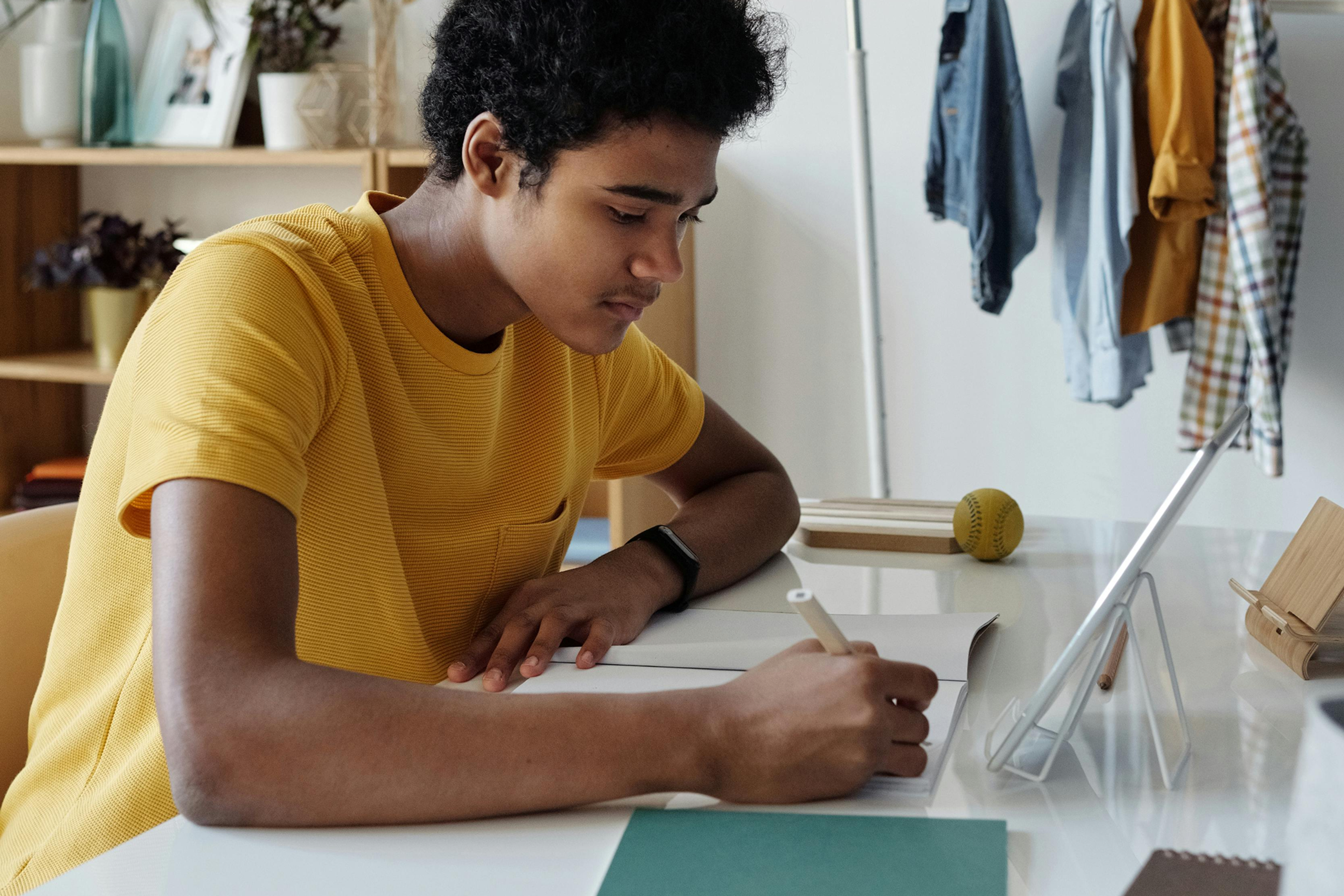

Three years ago, if someone struggling with an eating disorder had asked, “How can I find an eating disorder dietitian near me?” I would have sat down with them and helped them find all their local options, considering things like commute time and appointment availability and even parking. Today, if asked the same question, I would respond much differently. I would tell them that location shouldn’t even be a consideration, that we should find the right dietitian for their unique needs, rather than thinking about how near or far they may be. Indeed, virtual treatment has changed everything—and I’m as surprised as anyone.
As an eating disorder registered dietitian (RD), I was conditioned to work in treatment centers, clinics, and counseling offices—so that’s what I did, without a second thought. Then, COVID-19 turned the world upside down. For my work with clients, that meant going online abruptly as we waded through an uncertain and traumatic global crisis. At the time, I was simply doing what most other eating disorder providers were doing: learning how to take care of clients and support their recovery in a virtual space. However, as I became accustomed to this new normal, I came to realize that virtual RD treatment could not only take the place of in-person sessions, but also expand access to those who may not have eating disorder dietitians near them.
The role of the RD in eating disorder treatment
As a critical part of an eating disorder treatment team, RDs work with clients and patients on several aspects of their recovery, including meal planning and support, weight restoration and/or stability, reviewing lab work, and healing patients’ relationships to food, body, and movement.
“The RD educates the patient and helps them understand normal food intake patterns and meals, metabolic rate, and how to identify the feelings of hunger and fullness,” says Rebecca Jaspan, registered dietitian specializing in eating disorders. “They also help the client become aware of the body's physiological, biological, and emotional responses to food and exercise.”
Beyond these physical components, dietitians also guide patients to let go of destructive beliefs, thoughts, and behaviors, and help them to develop a sense of safety in their bodies so they can live nourished, rich, and authentic lives aligned with their values.
Jaspan describes the dietitian as a “partner in guiding the client” towards truly healthy relationships to food and body. “You can expect to address all aspects of body and mind in visits with a dietitian,” she says. “During sessions, the client and dietitian may review their food intake, go over different aspects of nutrition education, create meal structures, and help the client formulate more neutral, fact-based, and helpful thoughts and feelings toward their food and body.”
Dietitians also regularly communicate with the rest of the team, including doctors, psychiatrists, therapists, and family members, to best support clients and patients in their recovery. At Equip, the dietitian is part of each patient’s 5-person treatment team, which also includes a medical provider, therapist, peer mentor, and family mentor.
Wouldn’t it still be better to find a dietitian near me over a virtual RD?
In this new, stabilizing post-pandemic world we live in, it’s fair to wonder if receiving online eating disorder care is effective. After all, eating disorder recovery is extremely challenging and personal, and the stakes are high.
“I have seen incredible success with virtual treatment,” says Lauren Chaffin, a registered dietitian specializing in weight-inclusive treatment and eating disorders. “The clients receive all of the same education and guidance that they would in-person, but both client and clinician get to do this in the most comfortable and convenient location for them.”
In fact, emerging research is showing that virtual treatment works. One 2021 study in the International Journal of Eating Disorders compared outcomes of in-person and virtual outpatient eating disorder treatment and found similar improvements, such as weight gain, decreased symptoms, and patient satisfaction in both groups.
Another 2021 pilot study in the same journal showed no differences in outcomes, including weight, eating disorder symptoms, perfectionism, and depression, when comparing a virtual, multidisciplinary intensive outpatient (IOP) program and an in-person one.
Additionally, Equip’s research shows virtual Family Based Treatment (FBT) with a multidisciplinary team, including an RD, is effective. Their 2022 study in Eating Disorders showed improvements of Equip patients and their families who received virtual FBT for up to one year, including weight restoration and increased caregiver self-efficacy, as well as decreased eating disorder symptoms, depression, anxiety, and caregiver burden.
In my own practice, I observe similar progress in my clients as I did when practicing in-person. In fact, we are often able to have more complete sessions virtually, because there’s not the added layer of traffic and commuting.
What are the benefits of working with a dietitian virtually?
One of the biggest benefits of virtual treatment is that patients can meet their dietitian from a space that feels safe to them. “[Virtual treatment] allows the client to see their care team in the comfort of their own home, allowing them to be more vulnerable and more willing to share in their sessions,” Chaffin says.
Dietitians can guide clients through mindfulness practices in their own safe spaces, which supports clients’ connections to their bodies and selves but can feel quite vulnerable, especially when done in an unfamiliar office. “In virtual sessions, I may walk my clients through breathing exercises or a body scan that they can do from their own personal yoga mat or even their bed,” says Jaspan.
Virtual treatment also gives patients more options when it comes to choosing a dietitian. “Distance is not a factor,” says Chaffin. “This allows patients to choose a great fit for them and their recovery journey.” In other words, instead of asking “Who’s a good dietitian near me?” those seeking care can ask, “Who is the best dietitian for me?”
Virtual nutrition sessions can also be highly interactive. “Dietitians can be invited right into a client’s kitchen and pantry to review what they’re eating, answer their questions, and make individual recommendations,” Jaspan adds. “I have had a number of sessions with clients where we cook together, eat a challenging meal, or do an exposure to a fear food all from home.”
I find it impactful to use a patient’s personal surroundings to enhance our work together. For example, I’lll invite clients to find items in their home that create a sense of safety, such as seashells from a recent beach trip, framed photos of loved ones, paintings of nature, comforting blankets, or a trusted furry friend. Fostering a sense of safety promotes nervous system regulation, helping clients feel more at ease and connected to the present moment, and better able to communicate in session and get their nutrition needs met.
There are logistical benefits, too. According to a 2021 scientific review article in International Journal of Environmental Research and Public Health, research shows that for teens, virtual eating disorder treatment makes it easier to include other family members in treatment. The same review found links between virtual care and significant financial savings for families from avoiding costs of travel and the time burden necessary for in-person visits.
“Clients can schedule sessions during their day without the added stress of commuting to and from a provider’s office,” Jaspan says. There’s no worse way for a client to start a session than fresh out of rush-hour traffic, running late.” Personally, my clients like to meet on their lunch breaks or in the early morning before they’re off to work, which would be impossible without virtual care.
Virtual treatment also allows for continuity of care—I love that I can continue working with my teen clients who go off to college and need continued nutrition and body image support in their recovery.
The unfortunate reality is that there are far too many barriers to effective eating disorder treatment. The good news is that, through the power of online care, physical location is no longer one of those barriers. In today’s virtual treatment landscape, the answer to the question “Is there an eating disorder dietitian near me?” can now always be this: it doesn’t matter. Effective RD care is at your fingertips, no matter where you are.
Citations:
- Steiger, H., et al. (2022). In-person versus virtual therapy in outpatient eating-disorder treatment: A COVID-19 inspired study. International Journal of Eating Disorders, 55( 1), 145– 150. https://doi.org/10.1002/eat.23655
- Levinson, Cheri A et al. “Pilot outcomes from a multidisciplinary telehealth versus in-person intensive outpatient program for eating disorders during versus before the Covid-19 pandemic.” The International journal of eating disorders vol. 54,9 (2021): 1672-1679. doi:10.1002/eat.23579
- Dori Steinberg, et al (2022): Effectiveness of delivering evidence-based eating disorder treatment via telemedicine for children, adolescents, and youth, Eating Disorders, DOI: 10.1080/10640266.2022.2076334
- Maglia, Marilena et al. “Evaluation of the Effects of Telepsychotherapy in the Treatment and Prevention of Eating Disorders in Adolescents.” International journal of environmental research and public health vol. 18,23 12573. 29 Nov. 2021, doi:10.3390/ijerph182312573







